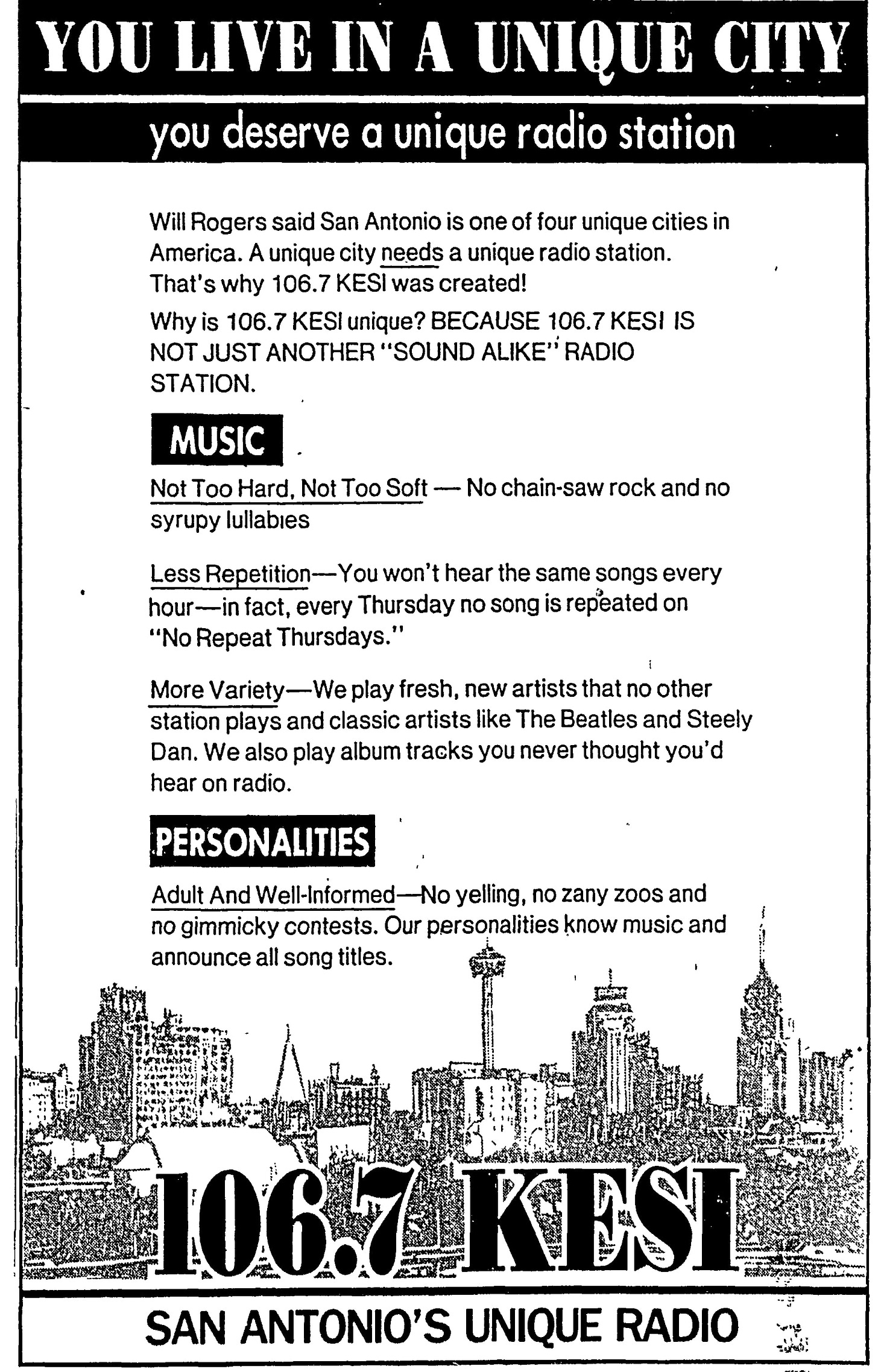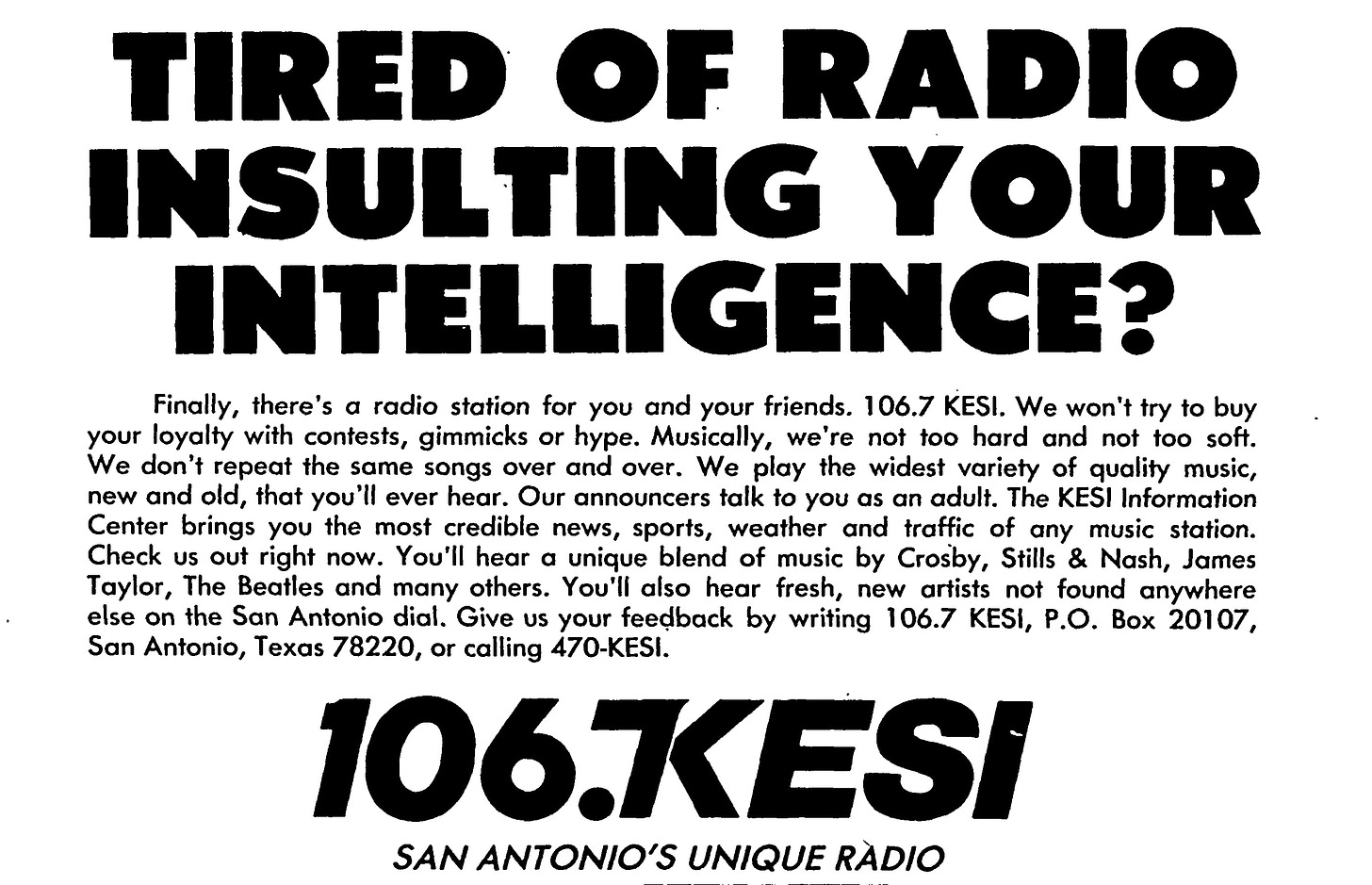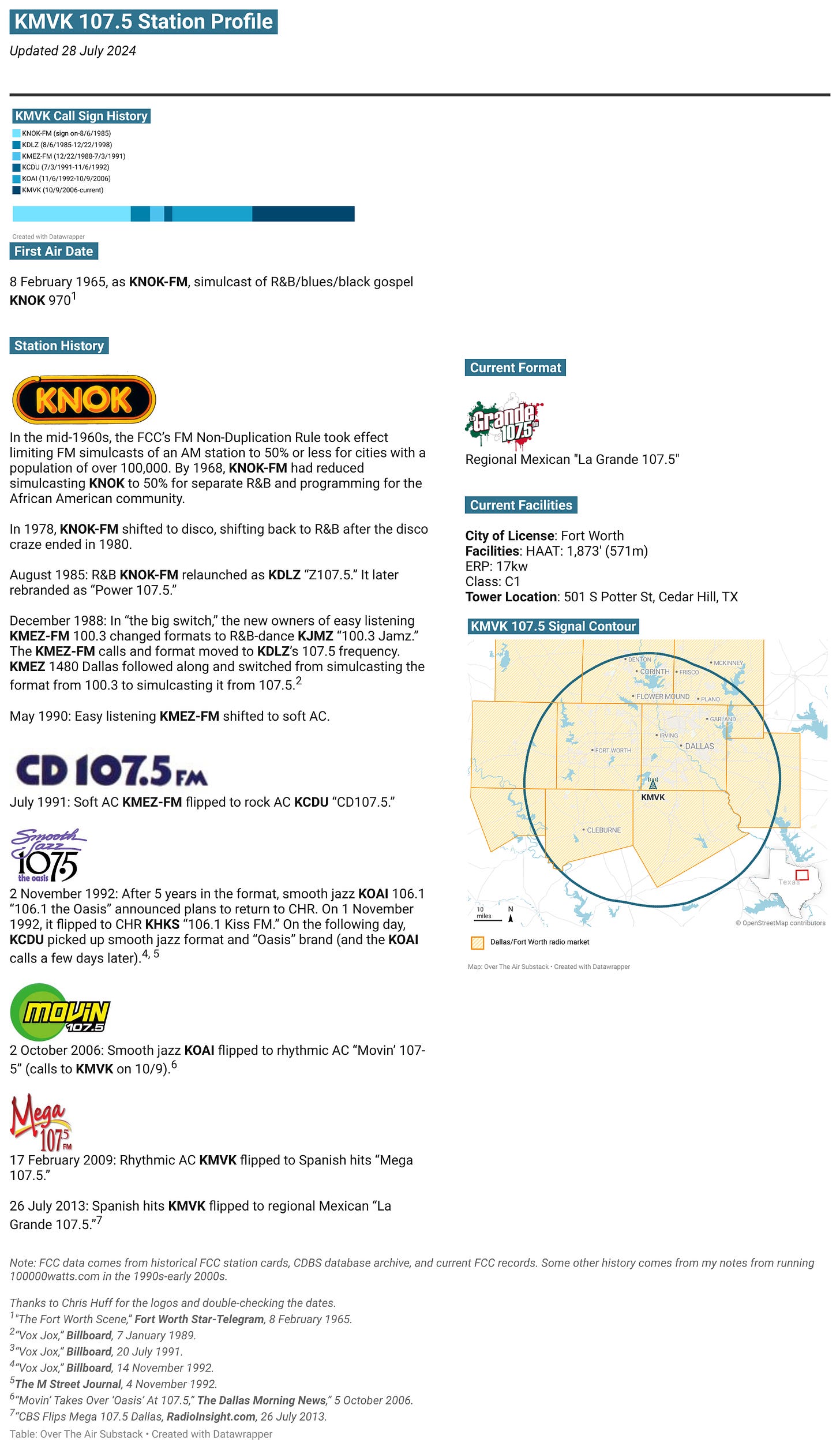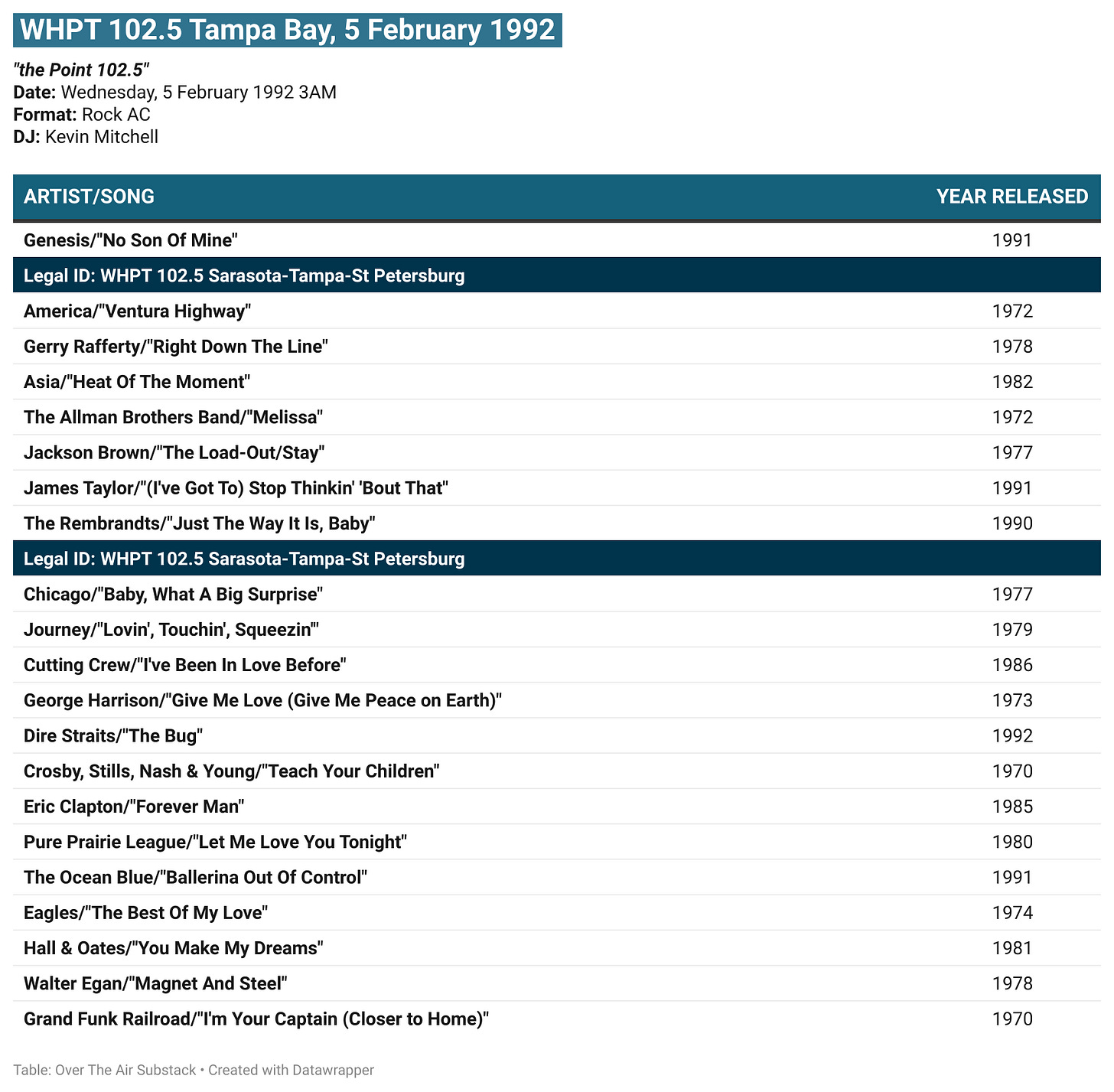Rock AC: When Soft Rock Was Actually Soft Rock
Revisiting the Rock AC format: KCDU Dallas/Fort Worth, KDBK/KDBQ San Francisco, WHPT Tampa Bay, KHHL Austin, WMMO Orlando, KMMA Fresno
For decades, many an adult contemporary or soft AC outlet branded around playing “soft rock” or “lite rock” even though much of what they played included titles from the pop realm (Madonna, Taylor Swift, Kelly Clarkson, etc.) or other genres that do not have very much rock and roll DNA in them. Many of those outlets have phased out the term “rock” in their branding (AC WASH 97.1 Washington DC is no longer “Soft Rock 97-1 Wash FM,” AC KEZK 102.5 St Louis is no longer “Soft Rock 102.5 KEZK,” AC WWLI 105.1 Providence rebranded just a few years ago from “Lite Rock 105” to just “Lite 105,” etc.). Though, there are still a few out there today, such as AC KSOF 98.9 Fresno is still “Soft Rock 98.9.”
Rock AC Format Emerges
Enter the rock AC format of playing actual “soft” AOR and classic rock. WMMO 98.9 Orlando largely gets pegged as the original rock AC when it signed on in 1990 to great success. However, like most “new” things in radio, it has probably been done before. For example, KESI 106.7 San Antonio ran a AC/AOR format from 1985-1987.
Notable in the KESI ads above — “no chain-saw rock,” “no repeat” days, no “gimmicky” contests, DJs announcing all the songs, playlists including The Beatles, Steely Dan, James Taylor, Crosby, Stills & Nash — are all themes of the 1990s and beyond rock ACs as well. (Side note: If you have any old KESI airchecks, I would love to get a hold of them). Of course, even further back in radio history, the rock AC format clearly shares some genetics with “mellow rock” KNX-FM 93.1 Los Angeles back in the 1970s.
While it may not have been the first, WMMO was certainly successful and certainly did spark a fuse to launch a lot of rock AC outlets around the country in the early 1990s, though few had the success WMMO did. Early markets that got a rock AC included Dallas/Fort Worth (KCDU 107.5 “CD107.5”), San Francisco (KDBK 98.9/KDBQ 99.1 “Double 99”), Seattle (KMTT-FM/AM 103.7/850 “the Mountain,” 19911), Las Vegas (KMMK 103.5 in 1991, followed by KXPT 97.1 “the Point” in 19932), Kansas City (KRVK-FM 98.9 “the River”), Denver (KHOW-FM/AM 95.7/630, 19913), Tampa (WHPT 102.5 “the Point”), Tucson (KTZN 92.1 “Tucson 92, Just Right Rock,” 19914), Norfolk (WKOC 93.7 “the Coast,” 19915), Fresno (KMMA 107.5), and Bakersfield (KMYX-FM/AM 103.9/1310 “the Mix,” 19926) to name a few.
The Building Blocks Of The Format
In this article, I’ve pulled airchecks of six of them, including WMMO, plus KCDU, KDBK/KDBQ, WHPT, KMMA, and later convert KHHL 98.9 Austin. Some common formantics you will hear that were common with KESI that form the rock AC format checklist:
No harder rock
Big library with no repeat days
No DJ talking over the song
Back announcing the songs
No silly contests
No loud DJs
Common as well to the format is a library heavy with 1970s classic rock tracks. Like traditional classic rock outlets, the reliance on the 1970s means as time moves along, the average age of the songs on the stations is getting older and older. For the half dozen stations featured today, the four with audio from 1991-1992 averaged from 9-14 years in terms of the average age of songs played. The audio from KHHL and WMMO are from a decade later, and with a lot of 1970s songs still being played that are also a decade older, the songs they played were on average 19 (KHHL) and 24 (WMMO) years old.
From the chart, KMMA and WMMO actually invert with KMMA playing mostly songs 15 years old or younger and WMMO mostly playing songs over 15 years old.
Time For A Listen
With the nerdy history and charts done, it’s time to actually take a listen to how each of these rock ACs sounded back in the day, particularly since the format basically no longer is really around. After a 25 year run, even WMMO is now out of the format.
First up is the short-lived KCDU 107.5 “CD107.5” from D/FW. I recorded this airchecks a couple of days right after the station flipped from soft AC KMEZ-FM to rock AC.
In terms of the rock AC checklist above, KCDU’s take on “no harder rock” was to position on “great classic rock without the heavy metal.” As is also common to these stations, “every day is a no repeat day.” The DJ on deck also back announced the artists played.
CD107.5 did not make it to 18 months. When cross-town smooth jazz KOAI 106.1 “106.1 the Oasis” announced its intentions to return to CHR “106.1 Kiss FM,” KCDU quickly scooped up the smooth jazz format, KOAI calls, and “Oasis” identity in November 1992. Even so, KCDU lived three times as long as KMMA further below.
Presently, the station is regional Mexican KMVK “La Grande 107.5.”
Prior to this aircheck, the assorted owners of the 98.9 facility kept it interesting in the prior decade — from standards KMPX, rock KQAK “the Quake,” eclectic/AAA KKCY “the City,” a three month stint as CHR KHIT-FM “98-9 K-Hit,” AAA KOFY-FM, and then to rock AC “Double 99FM” in the summer of 1990. With the move to rock AC, the “Double” name derived from the 98.9 frequency now being paired with the 99.1 San Jose metro signal to add coverage to the South Bay.
From the rock AC checklist, KDBK/KDBQ’s positioning on the no harder rock was “mellow rock” and “it’s softer, and it’s still rock and roll.” Back announcing all the songs and not talking over the songs also are ticked off.
Presently, the 98.9/99.1 combo is regional Mexican KSOL/KZOL “Que Buena.”
This audio is just under two months into WHPT’s existence. It moved from AAA WHVE to rock AC WHPT “the Point 102.5” in December 19917. After editing hours of airchecks, it might be my imagination, but WHPT seemed less sedating musically than its peers with more up-tempo — relatively speaking to this group — song choices.
Checking the rock AC checklist: no hard rock, back announcing, and “no rude contests.”
The WHPT calls are still in place, but the format today is hot talk “102.5 the Bone.”
The 98.9 frequency is another Austin to see a lot of format changes over the years. It originally was KLTD 99.3 Lampasas, which was purchased and upgraded from a class A and moved to 99.1C1 to reach Austin as oldies “Kool 99.” Due to “severe co-channel interference within its primary coverage area from” KODA 99.1 Houston and KRYS-FM 99.1 Corpus Christi caused by “the signal propagation phenomenon known as ‘ducting’,” the FCC approved changing KLTD’s allocation from 99.1C1 to 98.9C1 in September 19908, allowing KLTD to move to 98.9. It would go on to be SMN Z-Rock KUTZ, then talk KJFK, before it became KHHL in 2000. In 2001, it downgraded to a class C2, but changed city of license to Leander to allow the transmitter to move in-market.
This audio is about a year into the rock AC format. From the checklist, the no hard rock positioner is “rock without the hard edge.” Also getting checkmarks: back announcing, “no talky DJs,” “no silly contests,” “you’ll never hear the same song more than once a day.”
Presently, the station is owned by the University of Texas and is AAA KUTX.
This is the one that started the early 1990s rock AC rush. I do not have an aircheck from early on; this one comes from 2005.
Not surprisingly, it checks all the rock AC formantics: “we always ID the music and never talk over the songs,” “soft rock and roll of yesterday and today.”
WMMO finally evolved out of the format about a decade ago by shifting musically to classic hits and dropping the practice of back announcing the song titles played.
Of the six stations highlighted, Fresno is the smallest market. KMMA had a bit more relatively current music in their mix compared to the others — “Lily Was Here,” “Second Chance,” “Sign Your Name,” and Pat Benatar’s remake of B.B. King’s “Payin’ The Cost To Be The Boss.” I completely forgot about “Lily Was Here,” which got decent airplay back in the day and cracked the top 20 of the Billboard Hot 100. Like other smooth jazz-ish instrumentals from that era, those are pretty much ignored by classic hits stations these days.
KMMA signed on in April 1991. It’s previous format was running SMN’s Z-Rock hard rock format as KZZF; so it went from one end of the rock spectrum to the other. The rock AC format only lasted 6 months — two months after this aircheck, it became country “Camel” KCML.
Presently, 107.5 is regional Mexican KOND “La Jefa.”
As always, the logos and other intellectual property belong to the stations. The recordings were made from over the air broadcasts.
“Rock AC, Adult Alt: Two Different Worlds,” Billboard, 17 August 1991. Note: KMTT-FM/AM, KMMK, KRVK.
The M Street Journal, 3 March 1993.
The M Street Journal, 4 February 1991.
The M Street Journal, 7 October 1991.
The M Street Journal, 24 June 1991.
“Street Talk,” Radio & Records, 21 February 1992.
“Vox Jox,“ Billboard, 14 December 1991.
DA 90-1223, MM Docket No. 89-598, Federal Communications Commission Record.




















